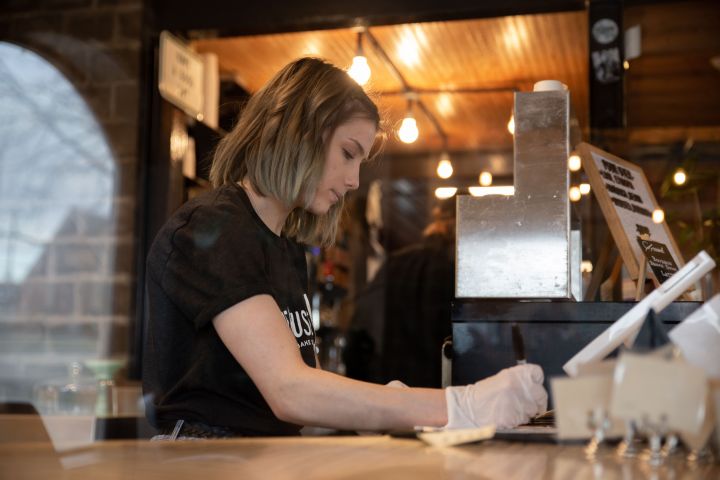
Where did all the coins go?

With a dip in consumer spending and retailers urging customers to pay with cards instead of cash, the coronavirus pandemic has taken coins out of circulation and created a shortage across the United States. By now, it’s likely you’ve seen signs at your grocery store asking you to pay with exact change.
The Federal Reserve has created a task force to study the problem. With representatives from the U.S. Mint, Walmart, Coinstar and the Fed’s own experts, the task force is hoping to find solutions for bringing coins back into this economy.
Sherri Reagin, the executive vice president of North Salem State Bank in Indiana, is also on the task force. Reagin spoke with “Marketplace” host Kai Ryssdal about solutions to get “coins back into the right hands.” The following is an edited transcript of their conversation.
Kai Ryssdal: So where are all the coins in this economy?
Sherri Reagin: The coins are actually still available. They are out in circulation. They just are not moving where they need to be. In 2019, we had 47.4 billion coins in circulation, and currently there’s 47.8 billion. So we actually have more out there. They just need to get moving.
Ryssdal: So that’s that billions of dollars’ worth of coins, right? Almost $50 million worth of coins?
Reagin: Yeah, there’s plenty of coin out there.
Ryssdal: OK, so other than me with probably a couple hundred dollars in milk jars on my dresser and my now abandoned office, they’re just not being spent. Is that what’s going on? Because people aren’t going out there and spending money?
Reagin: You’re right. People have absolutely changed their spending habits during the pandemic. There’s a lot of shuttered businesses, mass transit isn’t running, laundromats have been closed. Oftentimes, you know, our bank customers have been saving coin and bring it into cash in to go on vacations or trips, and people aren’t traveling right now. So they’re not taking their coin into Coinstar machines and things like that.
Ryssdal: OK, so as powerful as the Federal Reserve is and as well intentioned as this task force is, how are you going to change consumer behavior? Or do we just have to deal with a coin shortage until, I guess, there is a vaccine, right?
Reagin: Well, you know, we’re currently working on getting communications out to help people address the coin shortage and help address the supply chain, because we believe that it’s a supply chain issue, and we just need to get the coins back into the right hands.
Ryssdal: What happens though, if I — and look, this is going to sound like a trivial thing, but it’s real for so many people — if I have to have quarters to do my laundry, and I can’t get quarters? What do I do?
Reagin: And that is the real problem. You know, there’s a lot of local retailers who aren’t accepting cash right now because they don’t have the change to give their customers or they’re putting it back on a card. But you know, these are unprecedented times. We don’t really know what it’s going to look like in two weeks. So we just encourage everyone to look under the couch cushions and in their cars and somehow have the coin back in circulation.
Ryssdal: If you and the Fed and this task force are successful, how long you figure until we’re approaching something normal with the coin shortage in this economy?
Reagin: I don’t know that we have any projection of what that’s going to look like. I think in some metropolitan areas, bank lobbies are not yet open. So then it becomes how do we get the coin to the banks? Nobody knows how this pandemic is going to end or how much longer it’s going to continue. We’re just going to take it one day at a time.
For even more on the history of coins, check out “Million Bazillion,” a new Marketplace podcast for the whole family. Our first episode explores the origins of money. Find that and more at Marketplace.org/million.
There’s a lot happening in the world. Through it all, Marketplace is here for you.
You rely on Marketplace to break down the world’s events and tell you how it affects you in a fact-based, approachable way. We rely on your financial support to keep making that possible.
Your donation today powers the independent journalism that you rely on. For just $5/month, you can help sustain Marketplace so we can keep reporting on the things that matter to you.


















